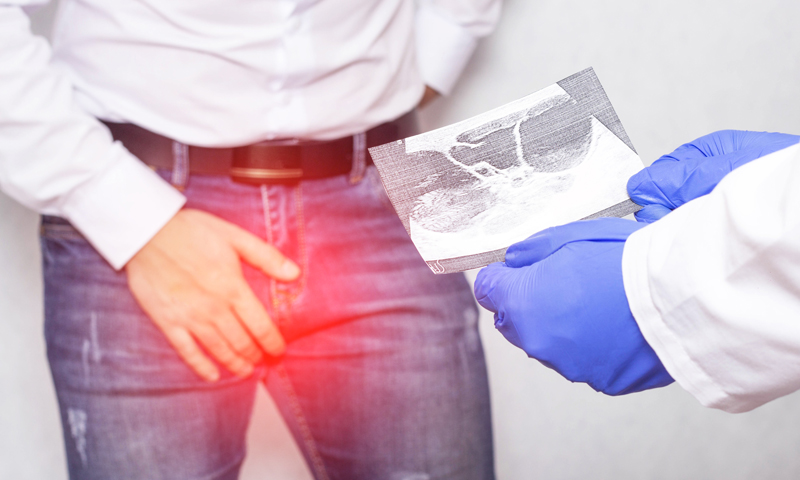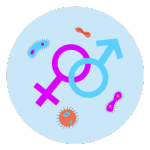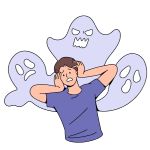Epididymal Cyst: Causes, Symptoms & Treatment
Medically Reviewed by Dr Sravya, MBBS, MS
Introduction
An epididymal cyst is a fluid-filled sac in the epididymis. It is a non-cancerous swelling and is usually painless. It commonly occurs in men as they grow older but is also seen in younger age groups. They do not play any role in fertility.
This article will shed light on epididymal cysts, their causes, symptoms, diagnosis, and treatment.
Male Reproductive Organs
There are two testicles, or testis, one on either side of the penis. The epididymis is a collection of many coiled tubules found behind and above the testicles. The sac containing the testicles and the epididymis is called the scrotum. The testicles produce sperm that is then carried and stored in the epididymis. From the epididymis, the sperm travel to the vas deferens. Here, they mix with the fluids from the prostate and seminal vesicles and make semen. Semen is the fluid that comes out of the penis at the time of ejaculation.
What is an Epididymal Cyst?
A blockage in the tubules of the epididymis can lead to a collection of clear fluid in that area. This sac-like growth is called an epididymal cyst. It may vary from the size of a pea to as large as another testis. There may be one or many such cysts in the epididymis. They usually occur on one side but may sometimes be present on both sides.
If the fluid contains sperm, the cyst is known as spermatocele. Both conditions are harmless, usually painless, and treated similarly. They have no known effects on male fertility.
The condition is fairly common, and 1 out of 3 men has epididymal cysts. Men of all age groups may have it, but it is seen to increase with age. The epididymal cysts tend to resorb on their own and may not require treatment.
Symptoms
Most men do not notice a developing cyst, as it is usually painless. You may find one during self-exploration or a physical examination by a doctor.
It is a small, pea-sized, round, and smooth growth felt below, behind, or above the testes and feels separate from it. The swelling will feel similar to a water balloon and may be tender to the touch. It may sometimes grow big enough to press on surrounding structures and then cause related symptoms.
NOTE: Any swelling within the testis is concerning and needs immediate medical attention.

Other symptoms that you may notice are:
- Heaviness in the scrotal sac
- A feeling of pressure in the area under the penis
- Redness of the scrotal sac on the affected side
- Tender swelling or hardening of the testicle
- Dull pain in the lower back and abdomen
Causes
There are no known causes for the development of an epididymal cyst, but inflammation, infection, or blockages of the tiny tubes in the epididymis may cause an accumulation of fluid in these ducts and form a cyst. It is neither contagious nor transmitted through sex.
Diagnosis
If any of the above symptoms occur, you should go see a urologist for a complete check up.
The doctor will do a physical exam. He will then use a torch to shine light from behind the testicles. The fluid in the cyst allows the light to pass through, while a solid and dense swelling like a tumour will not allow it.
The doctor will most probably ask for a scrotal ultrasound for a definite diagnosis and to assess the size of the cyst. This will help to compare the size of the cyst with future ultrasound reports and assess if the cyst has grown or reduced in size.
Doctors can not know whether the cyst is an epididymal cyst or a spermatocele with these tests alone. That is why doctors use both terms for cysts.
Treatment
Epididymal cysts tend to stay the same. Sometimes, if the fluid is resorbed over time, it gets smaller. Doctors advise observing the cyst and reporting any increase in size.
You will need treatment if the cyst grows in size or the swelling is painful, distressing, and embarrassing. Discuss all the available treatment options with the urologist and then decide the best management based on your age, whether you are planning a family or your general health. You need to tell your doctors if you have any other health issues like diabetes, heart problems, high blood pressure, kidney issues, etc. to make an informed decision.
1. Surgery
This is the most common treatment. It is quite straightforward and can be done under general or spinal anesthesia. General anesthesia will make you sleep while the procedure is done. Spinal anesthesia, on the other hand, will only numb the body from the waist down. This procedure is called epididymal cystectomy or spermatocelectomy, and the cyst is removed during the surgery.
After the surgery, you will be given antibiotics and pain-relieving medications.You may experience swelling and some bruising for 1-2 weeks after the surgery,but the recovery is usually quick.
As mentioned, it is quite a straightforward procedure. But, like any other surgery, there may be complications such as infection, bleeding, loss of male fertility due to blockage of the epididymis or vas deferens, etc. Recurrence of cysts may occur, but it is least common with this method of treatment.
2. Aspiration
If you do not prefer surgery, the doctor may decide to drain the cyst fluid by inserting a needle. However, this may only provide temporary benefits. The cyst lining that is left behind may produce more fluid and form the cyst again.
This is not a very common procedure as the cyst recurs and may be done only in special situations when surgery is not an option.
3. Percutaneous Sclerotherapy
This is an outpatient procedure. The doctor inserts a catheter into the cyst and injects a contrast dye. They then observe the cyst with an ultrasound. If the cyst lining is intact (not leaking) and the cyst does not affect the other parts of the testis, they inject ethanol into the cyst through the catheter for about 20 minutes and then aspirate it out.
This should kill the cells of the cyst lining so that no new fluid is produced and the cyst shrinks over time. You will need follow-up visits for a few months to make sure that the procedure was effective and the cyst has shrunk. You may need to get the procedure again if the cyst does not decrease in size.
Conclusion
Do self-examinations every month for any testicular lumps. Get regular check up for early detection and treatment of problems. Lumps on or in the testicles can be a reason for concern, and you should get them checked by a doctor at the earliest. However, you have nothing to worry about once you know that swelling is an epididymal cyst, as it is a common occurrence in men and, in most cases, does not require any treatment.


















